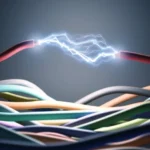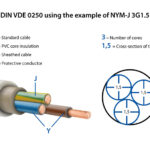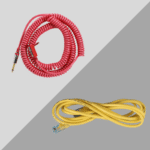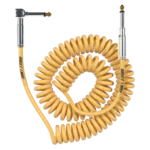A coaxial cable, often referred to as coax cable, is a type of electrical cable that is primarily used for transmitting data, video, and audio signals. Its unique design, which consists of a central conductor, insulation, shielding, and an outer protective layer, makes it highly effective in reducing signal interference and maintaining high-quality transmission over long distances. Coaxial cables have been used in a wide range of applications, from television broadcasting to internet connectivity, due to their versatility, reliability, and relatively low cost.
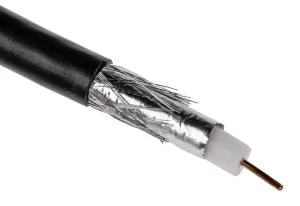
What is a Coaxial Cable Used For
Let’s explore what coaxial cables are used for and why they are so widely adopted in various industries.
Primary Uses of Coaxial Cables
Television Broadcasting:
One of the most common uses of coaxial cables is in cable television (TV). Coaxial cables are used to carry the TV signal from the cable provider to your television set. The cable can deliver both standard-definition (SD) and high-definition (HD) signals, making it a reliable and popular choice for residential TV service. It is also used for connecting satellite systems to provide signal reception for satellite television.Internet Connection (Broadband):
Coaxial cables are often used to provide high-speed internet access, particularly with cable broadband. Internet service providers use coaxial cables to connect to your modem, allowing the transmission of data packets at high speeds. This technology is especially popular in areas where fiber-optic internet is not available. Coaxial cables can handle high bandwidth and ensure fast, stable internet connections.Radio Frequency Transmission:
Coaxial cables are frequently used in radio frequency (RF) applications, such as ham radio setups, telecommunications systems, and amateur radio. These cables are essential for transmitting RF signals without significant loss of power or quality. RF coaxial cables are commonly used for transmitting signals between transmitters and antennas, ensuring clear and reliable communication.Security Camera Systems:
Many closed-circuit television (CCTV) camera systems use coaxial cables to transmit video signals from cameras to recording devices, such as DVRs (digital video recorders). Coaxial cables are preferred in many analog security systems due to their durability, low cost, and ability to maintain high-quality signal transmission over long distances. Although newer IP camera systems often use Ethernet cables for data transmission, coaxial cables remain common in older analog systems.Audio/Video Connections (AV Systems):
Coaxial cables are commonly used to connect various audio-visual devices, such as DVD players, home theater systems, and gaming consoles to television sets, soundbars, or amplifiers. They are ideal for transmitting audio signals from a digital audio source to a sound system in a high-quality, interference-free manner.Computer Networks:
While modern Ethernet cables (Cat 5, Cat 6) have largely replaced coaxial cables for networking purposes, they were historically used in local area networks (LANs), particularly with the 10BASE2 Ethernet standard, also known as thin Ethernet or cheapernet. This technology has now become outdated, but coaxial cables were once a key component in network infrastructure.Satellite Dish Systems:
Coaxial cables are also integral in satellite TV setups, particularly for connecting the satellite dish to the receiver. The RF signals transmitted from the satellite to the dish are carried via coaxial cables. The cable's shielding prevents signal loss, ensuring reliable reception even under adverse weather conditions.Security Systems & Alarm Panels:
Coaxial cables are also used in alarm panels for security systems that require signal transmission. The shielded design of coax cables helps maintain signal integrity and minimize interference, which is crucial for ensuring that alarm signals are transmitted clearly and reliably.
Why Coaxial Cables Are Used in These Applications
Durability and Reliability:
Coaxial cables are known for their robust design, which includes a strong outer shield to protect against electromagnetic interference (EMI) and radio frequency interference (RFI). This shielding makes them particularly useful in environments where electrical noise might disrupt signal transmission, such as in industrial settings, data centers, and radio stations.High Bandwidth and Speed:
Coaxial cables can handle high-bandwidth signals, making them suitable for transmitting high-definition video, audio, and data at fast speeds. This is especially critical in high-speed internet connections and HD broadcasting.Ease of Installation:
Coaxial cables are relatively easy to install due to their flexibility, lightweight design, and standardized connectors (such as F-type connectors). This makes them a popular choice for DIY projects and professional installations alike.Long-Distance Signal Transmission:
Coaxial cables can maintain signal quality over long distances, especially when amplifiers are used. This is essential for applications such as satellite systems, CCTV, and TV broadcast where the cable may need to span hundreds of feet.
Conclusion
Coaxial cables continue to be a reliable and widely used solution for transmitting audio, video, and data signals in various residential, commercial, and industrial applications. Despite the rise of newer technologies like fiber-optic cables and Ethernet, coaxial cables remain essential for systems requiring high performance with low cost, reliable signal transmission, and long-distance capability. From cable TV to internet services and security systems, coaxial cables are integral to many systems that keep our modern world connected.
By understanding what coaxial cables are used for, you can appreciate their continuing role in modern communication and entertainment infrastructure. Whether you are setting up a home theater system, a security network, or a telecommunications network, coaxial cables remain a great choice for a versatile, high-performance solution.

